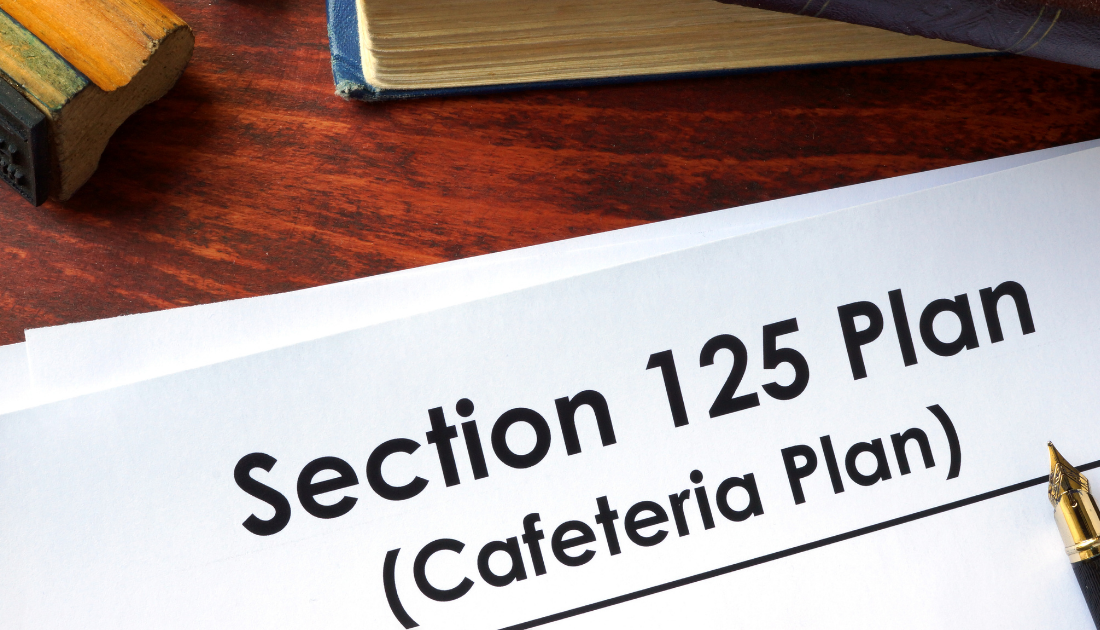What is a Section 125 Employer Health Insurance Plan (Cafeteria Plans)?

Just the Essentials...
- A Section 125 cafeteria plan allows employees to choose between several taxable and non-taxable benefits.
- Employees can save on taxes by setting aside money to pay for these benefits.
- Benefits include insurance premiums, flexible spending accounts, child care assistance, and retirement plans.
- Plans are only available through employers and must be offered on a non-discriminatory basis.
What is a Section 125 Cafeteria Plan?
A Section 125 plan, also known as a cafeteria plan, is a type of employer-offered flexible benefits health insurance plan. Employees are offered the choice between receiving compensation in cash or as another benefit, such as health insurance. This can lead to substantial tax savings for you and the company. Read on to find out how.
How do Cafeteria Plans Work?
Section 125 plans are called “cafeteria plans” because they allow employees to choose from a list of taxable and non-taxable benefits, much like a cafeteria allows you to choose from a selection of foods. Each year, employees may elect to put a portion of their paycheck into the cafeteria plan in addition to contributions made by their employer. This amount is deducted from their paycheck each month and applied toward one of the plan’s non-taxable benefits.
Cafeteria plans are designed to offer flexibility. In other words, money contributed to a cafeteria plan is not taxable income.
The IRS deducts a portion of your paycheck as a tax based on a percentage of what you earned that month. In short, the more you make, the more taxes you pay. That money goes into the system, meaning that while you still eventually benefit from it in the form of Medicare and Social Security, it will not help you right now.
When you contribute to a cafeteria plan, that money is removed from your paycheck before tax. This means your total taxable income is lower. While the percentage deducted from your paycheck is the same, you’re paying less money overall. Moreover, you can still use the money you set aside just for specific purposes.
What Can a Cafeteria Plan be Used For?
Cafeteria plans are most commonly used to pay for health insurance premiums, specifically, premiums for your employer’s group health insurance plan. In this regard, they’re very similar to other employer-offered insurance plans. However, what makes a cafeteria plan stand out is the other things you can use it for. This includes benefits such as:
- Child care assistance
- Retirement plans
- Life insurance
- Disability insurance
- Adoption assistance
- Health savings accounts
Employees are free to tailor plans to their specific needs. For instance, a young mother might be more interested in the child care assistance benefits, while an older employee might devote more money toward retirement.
The specific benefits vary from plan to plan. Some will only cover premiums with no additional employer contributions. A complete list of benefits that qualify can be found here.
One drawback to cafeteria plans is that benefits are considered “use it or lose it.” Any remaining funds over $500 are forfeited at the end of your benefit year. This sounds scary, but it’s not as bad as it initially seems. Thanks to tax savings, you’ll typically make a net profit even if you have to forfeit some money. Still, it’s best to plan your expenses well to avoid unnecessary forfeiture. Set forth a budget based on your expected needs, and consider consulting with a tax professional to maximize your benefits.
How Do I Qualify for a Section 125 Cafeteria Plan?
Cafeteria plans are only available through employers; individuals cannot purchase these plans from the marketplace. There are also some considerations for individuals who are the sole proprietor of a company, a partner, or shareholders who own more than two percent of the company.
Individuals who meet one of these criteria cannot enroll in a cafeteria plan, though their employees (including family members) can. Plans must be offered non-discriminatory. This means that all employees must be offered the same benefits under the same terms, without favoring highly compensated employees or executives.
A cafeteria plan can save you a lot of money on taxes, but it’s still important to look at the insurance to see if it meets your needs. If you need help picking the right plan, contact one of our licensed agents at (800) 318-9984, or enter your zip code to begin your search today!
